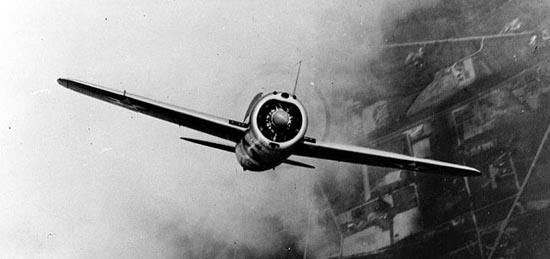U.S. NAVAL AVIATION RESOURCE CENTER > PREVIOUS PAGE
In 1935, the US Navy issued a requirement for a carrier-based fighter intended to replace the Grumman F3F biplane. Two aircraft designs were considered: the Brewster and the Grumman XF4F-1 which was still a "classic" biplane. The Model 139 incorporated sophisticated features for the time: a monoplane configuration, wing flaps, arresting gear, retractable landing gear and an enclosed cockpit.
The US Navy competition was opened up to allow another competitor, the Seversky XFNF-1, a navalized P-35 eliminated early on when the prototype could not reach more than 267 mph.

Photo # 80-G-3807 Brewster XF2A-1 fighter, in flight, circa 1938-39
(Source: U.S. Naval Historical Center)
Service testing of the prototype began in January 1938 and, in June, the Navy ordered 54 of the production F2A-1. The initial armament mix of two machineguns, a .30 (7.62 mm) and .50 (12.7 mm) Browning mounted in the cowl and firing through the propeller arc, would later be augmented by the provision of an additional two .50s, one in each wing outboard of the landing gear.
A later variant, the F2A-2, of which 43 were ordered, included a more powerful engine, a better propeller, and integral flotation gear, and was followed by the F2A-3. Unfortunately, the improvements added weight that adversely affected the fighter's performance and caused perennial problems with its landing gear (collapse issues), especially in shipboard service.
Sources:
Wikipedia: Brewster F2A Buffalo
U.S. NAVAL AVIATION RESOURCE CENTER > PREVIOUS PAGE
